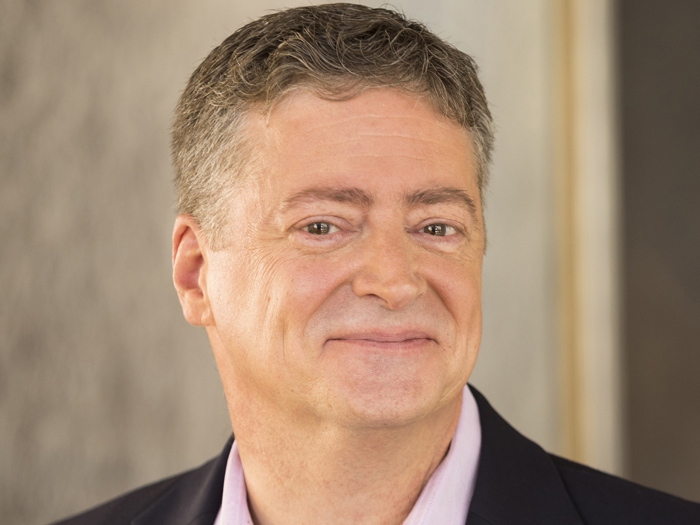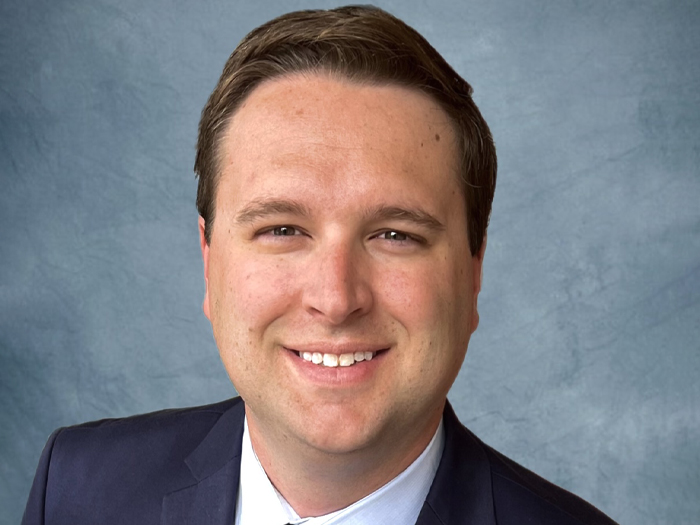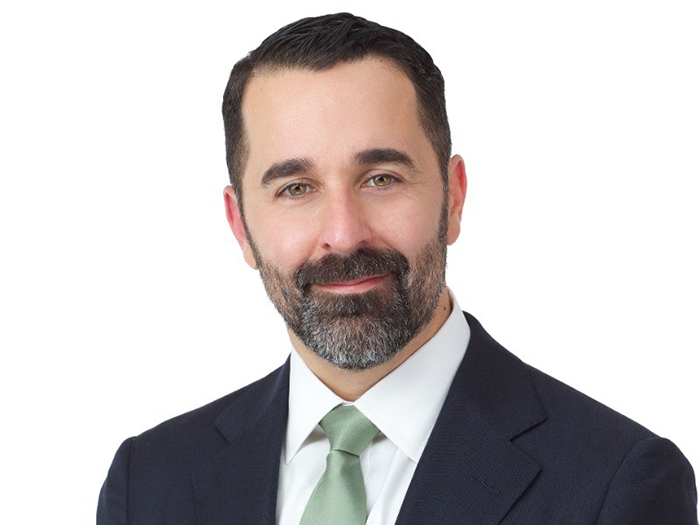Pushing Limits to Reach the Next Level: 10 Questions with Risk Strategies CEO John Mina

In late May, Risk & Insurance® editor-in-chief Dan Reynolds caught up with John Mina, CEO of Risk Strategies, to talk about some of his personal interests as well as get his perspective on the company’s 25th anniversary. What follows is a transcript of that discussion, edited for length and clarity.
Risk & Insurance: We really appreciate your giving us some of your time today John. Looking back at 25 years, what’s meaningful about that milestone for you?
John Mina: The most meaningful aspect of it is how focused we have been on maintaining the cultural values that are important to us as an organization, by far. The growth is great. We’ll hit, round numbers, a billion in revenue, somewhere between now and July 28th, our anniversary date, which is great timing.
The revenue numbers are like birthdays though, they’re milestones. We celebrate them, and the idea isn’t to stop, but to have more days like that. So, we’re going to keep on going.
It’s a great time to pause and reflect on the success of the organization, and most importantly, the people who helped get it there. That’s not me. I provide vision, and leadership, and direction, and herd people back into the right spaces when they get a little bit off track. But really, it’s everybody else. I’m just the person at the front of the room who gets to talk about what we’ve achieved.
R&I: I know culture’s a big deal for you, as it is for lots of leaders. What about your culture do you think brought you to where you are? And what do you want to make sure you maintain culturally as you move forward?
JM: Collaboration was huge at the beginning. It was a necessity. Now I look at it as a strategic advantage. It’s about creating more unique solutions, more brains around the table. Looking at an issue and coming up with solutions that we may not have achieved through the normal process. Because you now have this aggregation of 3,500 employees who come with a wealth of individual experiences, every one of the businesses that we’ve acquired achieved success in a slightly different way. They carved out their own unique niche.
Of some of their approaches I thought, “Wow, I never would have thought about it that way.” And therein lies some of the secret to its success, which is simply, “Let’s take a moment and listen to what people have to say, how they can add to the overall mix.” So, the collaboration is absolutely incredible.
I think the second thing I would add to the list is, we have historically been a very flat and open organization. We don’t have a lot of hierarchy. I think that’s really important. I host “Coffee with John” sessions that I do every week. That type of direct access to me is important, for both our employees and for me. For me, it allows me to keep a finger on the pulse of what’s important to our associates, without it being translated, or interpreted or homogenized.
I just get it raw, and just the way we should get it. And that allows us to make more insightful decisions and actionable decisions that will matter. I think keeping it flat with a lot of open doors, that’s super important. I have no intention of changing that.
R&I: There’s a lot of talk about the relevance of insurance, the future of insurance, the marriage of technology and underwriting, and the talent issue. This is a general question, but I think it’s worth getting into – what are your thoughts, or hopes, or perspectives on the future of this industry, its relevance, and also the position of your company within it?
JM: There is a lot there. Let’s talk about the future of the industry. There’s been a lot of discussion for 20-plus years about technology, disintermediating brokerage and insurance companies. And at some level, it slowly is taking place in small pieces, when you look at firms like Lemonade that have a direct-to-consumer approach. Geico is very good at that. I don’t think that that’s where, brokers really add value. So, if people want to buy off-the-shelf products at a discount price, then those should be accessible to them.
Where brokers need to bring value is in advice, and in consultation, and understanding clients’ industries. And the world is constantly evolving, and there is no cookie-cutter approach to that. Think about this statistic … 65% of children entering school today will graduate and go to work in industries that don’t even exist right now. That’s just a small 16- to 18-year period.
And the world will evolve dramatically during that period, and create all kinds of new industries with all new levels of risk, with the need for new products and new solutions. The industry has, in my opinion, a very bright future, as long as we continue to reflect on the fact that it is always evolving, and our industry needs to evolve. And our industry hasn’t always been the fastest to accept change.
There was a survey of college grads, I think it was done in the UK not too long ago, where they asked them to name the five most boring industries. And four of the top five or bottom five, I guess you’d call it, were the financial services space with insurance being third from the bottom. And that is almost an existential threat to our industry, in that we need a constant flow of people coming into the industry. And if people think it’s boring, are we going to attract the best talent if people don’t want to work at it?
So, one, we’ve got to change our image, I think. And I certainly don’t think that the people that I work with, interact with, are boring. Not at all. It’s actually very colorful and very entertaining. And I think what we do every day is fascinating.
I’m a bit of an insurance generalist. I talk to clients all day long about how they run their business, what they do for business. And it’s fascinating, the myriad ways that people have figured out how to make money, or provide a service, or provide a value if they’re a nonprofit. And all of those firms have different kinds of risks which have to be addressed. And they’re not going to be addressed with an off-the-shelf product in most cases.
R&I: We’re going to switch over to the personal part of John, and we’re fascinated by a recent adventure you undertook. It was in the Shenandoah Valley. Tell us what you did and why.
JM: It’s called the Shenandoah Epic. It’s an annual event. It’s a 24-hour multi-sport event. Hiking, mountain biking, and kayaking. It’s really an endurance event more than anything else. I started getting into these endurance events during COVID. I know myself well enough to know that if I don’t have a milestone to work towards, I won’t work out at all. So, fitness will be an absolute side thought for me. I started signing up for different types of things, just to encourage myself to continue working out. And I decided to do the Shenandoah Epic. I tried it last year, was not successful. This year I managed to finish.
They change the format every year, so you never know quite how it’s going to go, or the journey that you’re going to be on. This year it started with hiking, then kayaking, and then mountain biking, and then went back and forth between kayaking and mountain biking between different sections.
R&I: You refer to yourself as a conservationist. I was curious about your background and how you got to be where you are about that. Were you an outdoor person or a nature lover as a child?
JM: The only thing that I could add to that from a childhood perspective is, we traveled extensively as a family when I was young. My dad was in the insurance industry. He did a three-year tour overseas in Lebanon, and then Cyprus, and then the UK. So, I was exposed to travel at an early age, and different cultures and different places, environments. That was fun. But no, I would say the joy of the outdoors and conservation really started with my kids.
The idea was, “How do I expose them to it, and preserve this environment for them and for their kids?” And that’s really where I got very involved.
R&I: Is there a particular piece of conservation or sector that’s really closest to your heart, that’s most important to you?
JM: I’m a big fan of animal conservation, species conservation in particular. There’s a lot of animals that are on the brink of extinction. And I think my interest there has to do more with the fact that we live in a very complex ecosystem, and the loss of any part of it changes it in some way that frequently is not measurable until it’s too late. So, whether it’s preservation of a species or preservation of a rainforest, all of it has an impact on this giant ecosystem.
As we look at things like pandemics, and the risk that it has to us as a species ourselves, it’s really important to start recognizing we have to preserve it as much as possible, or we run the risk of exposing ourselves to new risks that we haven’t even anticipated yet.
A lot of this is about individual action. I think a challenge that we face is climate change, as an example. It’s just too big an issue, and it feels like you just can’t have an impact.
We all have to find that place where we can have an impact. Look at food, for example, 40% of the food on the planet goes unused. It’s wasted, it’s lost in its distribution process, spoilage, everything else that goes along with it.
Think about the impact if we could get that number down, whether it would be to energy utilization, which directly feeds into global warming because of all the cooling required, that’s a massive number. And how ineffective, frankly, the distribution process currently is, because some people don’t have enough.
Going back to The Shenandoah Epic, for just a bit. It really was more focused on just a personal challenge. I try to do this every year to keep my fitness goals alive. I also do it because there is something about pushing yourself down past your previous personal boundaries. And when you do get past that, it recalibrates your whole thought process on what you can achieve personally, professionally, whatever your goals are. Once you push past them, it resets everything for you. And you say, “If I could do this, what else could I do?” Right?
This started for me a long time ago, probably the most significant one was in 2018 when I hiked Kilimanjaro. And when I did that, I was like, “Well, if I could do that, what else could I do?” And I started doing more and more fitness-related goals, but I think it does recalibrate your whole thought process around many things in life from a confidence perspective.
I should add that this year, with the Epic race, I chose to recognize one of the nonprofits that I sit on, called Conservation Nation, and used it as a fundraiser to promote awareness about what Conservation Nation’s cause is. For me it was, again, more about raising their awareness and their mission. And Conservation Nation has a neat mission in that they’re really focusing on, “How do we create the next generation of conservationists?” And conservationism for the most part has been largely a wealthy, white provenance.
Their thought process was really based on the idea, “We need to create a next generation of conservationists that isn’t just that. It has to include everybody.” They’re really focused on getting into the school systems and educating in inner-cities, and finding those next-generation conservationists … that are passionate about it. And how do we keep that interest fueled? How do we make sure we get them directed to the right places, with the right education and the right causes? Because it’s hard to be a conservationist. It’s not particularly lucrative.
R&I: I was curious about the other organizations you’ve been involved with. Can you name others that you’ve been involved with?
JM: Before Conservation Nation I sat on the board of the Friends of the National Zoo. I did that for six years.
R&I: Does that consciousness permeate into your work life in terms of how you talk to your company or your colleagues?
JM: I would tell you, we strongly encourage our associates to contribute in the communities where they live and work. And we don’t direct them too specifically to conservation. It’s really, we feel that we have a strong responsibility to give back to the communities that we live and work in. So, we want to encourage them to do something. But it’s not necessarily focused specifically on environment.
R&I: When you think about the efforts insurance companies are taking to address climate change, Swiss Re is one that comes to mind but there are others, what are they doing that impresses you?
JM: Most of the major insurers, from what I can tell, have taken a strong position on climate change and being involved in policy, and driving it. And for good reason. In some ways this really threatens the industry on a couple different levels. First is on their liability side of their balance sheet, with all of the risk that they’re taking on. So, it’s very real.
Second is on the investment side of their balance sheet, where the very things that they’re investing in, whether it’s real estate or anything else, is at risk for future losses. So, I think that’s meaningful. And I think, third, they promote from a preservation of product perspective, at some point the products become ineffective, or unusable, or unsaleable. You just look at what’s going on in places like Northern California with wildfire, Florida with a hurricane next.
If we don’t provide a product that is sustainable, it’s gone, because just nobody buys it anymore, or they can’t price it at a place where everybody can afford it. So, it may cause the industry to look at different kinds of solutions, more parametric-based as opposed to a pooled risk approach. But I think I’ve been impressed with the position that most insurers have taken as it relates to supporting climate change, and recognizing the risks, and their role in how they could support a greener economy.
Whether it’s giving credits for those insureds who are in an energy-certified building or discounts for hybrid cars. So, I think more can be done in that to recognize and differentiate between those insurers who are providing for a greener economy and a more sustainable economy.
R&I: How optimistic are you that we have the collective will as a global society, to do what we need to do to address climate change?
JM: I’ll tell you that despite what appears like overwhelming odds against success, I am going to remain optimistic. Part of that is because I think hope is one of the most important assets that we as a species have, and it has gotten us through some challenging spaces. Just think about it – would we have gotten through the Black Plague if we had given up hope? I think we will get through it. I think that the planet will rebalance at some level. I don’t know what that will look like, but I think we will figure it out.
I just think it’s going to be different. And I also think, and this probably isn’t that popular right now, but I do believe that people can change their minds, and can change their approach. It’s very faddish right now to buy into off-beat theories and ignore the science because it’s convenient where it supports your own worldview. And that’s normal human behavior. We generally align ourselves with those statements that support our existing worldview, whether they’re right or wrong.
I think science plays a very big role here, and we have to make sure that we continue that. We have to message continuously. I do think the insurance industry can play a very big role in this, particularly as it relates to the fact that the insurers have, and you mentioned Swiss Re earlier, 25-plus years of data about what’s actually happening, and all the modeling analysis that goes into that.
Climate change is an area where the industry needs to continually evolve its thought process, both in terms of pre-loss cost containment and post-loss. And what their role is within their broader environment of how can they help insureds, how can they help on the policy side, and how can they help more directly.
But I think the insurance industry overall has a very bright future. &










